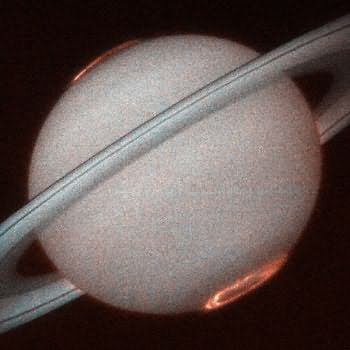An infrared camera aboard NASA's Cassini spacecraft has discovered a unique aurora lighting up Saturn's polar cap. The mysterious new aurora is unlike any other known in our solar system. "We've never seen an aurora like this elsewhere," said Tom Stallard, an RCUK Academic Fellow working with Cassini data at the University of Leicester. Stallard is lead author of a paper released today (13th November) in the journal Nature. "It's not just a ring of aurorae like those we've seen at Jupiter or Earth. This one covers an enormous area across the pole. Our current ideas on what forms Saturn's aurorae predict that this region should be empty, so finding such a bright one here is a fantastic surprise."
Aurorae are caused when charged particles stream along the magnetic field of a planet and into its atmosphere. On Earth these charged particles come from the solar wind – a stream of particles that emanates from the Sun.
Jupiter's main auroral ring, caused by interactions internal to Jupiter's magnetic environment, is constant in size. Saturn's main aurora, which is caused by the solar wind, changes size dramatically as the wind varies. The newly observed aurora at Saturn, however, doesn't fit into either category.
"Saturn's unique auroral features are telling us there is something special and unforeseen about this planet's magnetosphere and the way it interacts with the solar wind and the planet's atmosphere," said Nick Achilleos, Cassini scientist on the Cassini magnetometer team at the University College London. "Trying to explain its origin will no doubt lead us to physics which uniquely operates in the environment of Saturn." [caption id="attachment_21004" align="alignnone" width="250" caption="Saturn's aurora in Ultraviolet from Hubble.Credits: J.T. Trauger (Jet Propulsion Laboratory) and NASA. "]
[/caption] The new infrared aurora appears in a region hidden from NASA's Hubble Space Telescope, which has provided views of Saturn's ultraviolet aurora. Cassini observed it when the spacecraft flew near Saturn's polar region. In infrared light, the aurora sometimes fills the region from around 82 degrees north all the way over the pole. This new aurora is also constantly changing, even disappearing within a 45 minute-period.
Source:
NASA
 Universe Today
Universe Today
